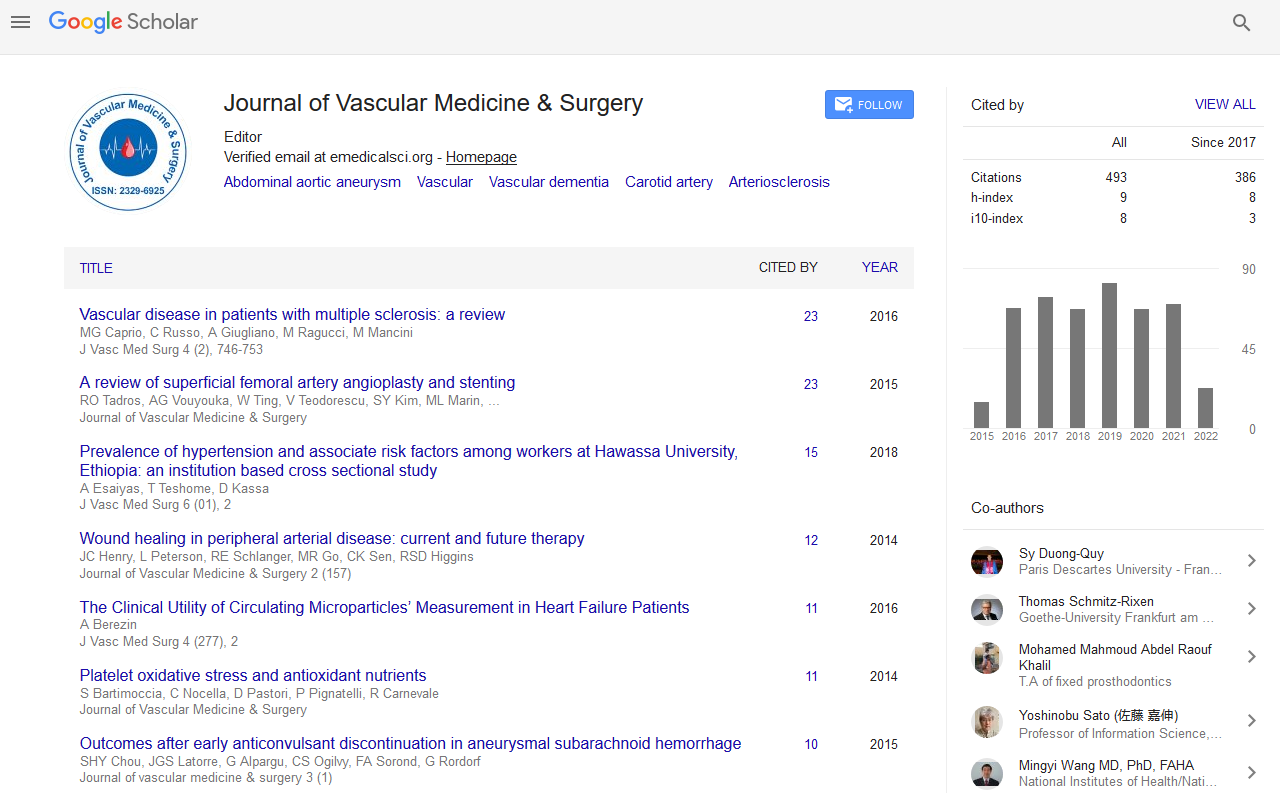Indexed In
- Open J Gate
- Academic Keys
- RefSeek
- Hamdard University
- EBSCO A-Z
- OCLC- WorldCat
- Publons
- Euro Pub
- Google Scholar
Useful Links
Share This Page
Journal Flyer

Open Access Journals
- Agri and Aquaculture
- Biochemistry
- Bioinformatics & Systems Biology
- Business & Management
- Chemistry
- Clinical Sciences
- Engineering
- Food & Nutrition
- General Science
- Genetics & Molecular Biology
- Immunology & Microbiology
- Medical Sciences
- Neuroscience & Psychology
- Nursing & Health Care
- Pharmaceutical Sciences
Abstract
Initial Clinical Efficacy and Safety of Microporous Polysaccharide Hemospheres (MPH) for Needle-Hole Bleeding from Expanded Polytetrafluoroethylene Grafts in Peripheral Vascular Surgery
Background: In this retrospective study, the initial clinical effects of microporous polysaccharide hemospheres (MPH) in peripheral vascular surgery were investigated. Methods: Forty patients who underwent peripheral vascular surgery using expanded polytetrafluoroethylene (ePTFE) grafts were included. Between May 2008 and June 2012, 26 patients (group A) were administered MPH (Arista AH®) 1 g, while 14 (group B) were treated with fibrin sealant (Beriplast P®) 1 ml at anastomosis between the prosthesis and native vessel during surgery. Perioperative results and complications including early graft patency, wound problems and postoperative general co-morbidities were retrospectively evaluated in both groups. Results: The numbers of anastomoses between native vessels and ePTFE grafts were 2.2 ± 0.5 in group A and 2.6 ± 1.2 in group B (p=0.14). The mean amount of intraprocedural blood loss was significantly lower in group A: 28.8 ± 24.5 ml than in group B: 88.2 ± 93.7 ml (p<0.01). The patencies of ePTFE grafts in the acute phase were 96.2% in group A and 85.7% in group B (p=0.24). Conclusion: The results of the present study indicated that MPH contributed to acceptable and similar early clinical and surgical outcomes with safety and efficacy for hemostasis to those of fibrin sealant during peripheral vascular surgery using ePTFE grafts.


